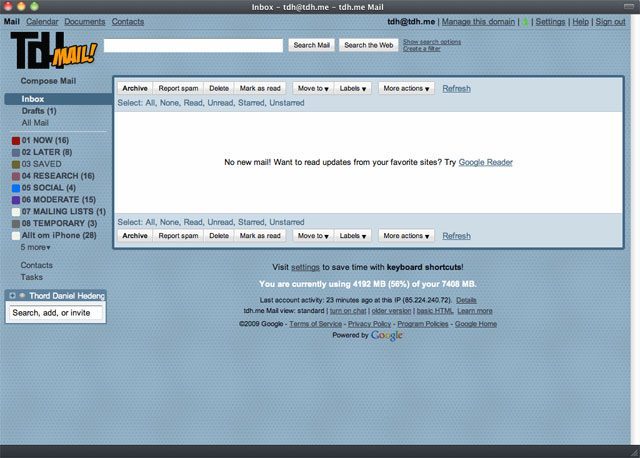There are 4 programs I launch every morning when turning on my computer:
- Chrome, my web browser of choice.
- Tweetie, my Twitter client of choice.
- TDHmail, my email client which is actually Google Apps for the domain tdh.me.
- Facebook.
These stay open throughout the day, and all are standalone applications, although the latter two could just as well have been running in any web browser, and Tweetie could be replaced by Twitter’s web interface.

I manage that with Fluid, a nifty little tool that lets me create standalone web browsers based on Webkit. If you’re on Windows you can do the same with Prism, which basically is standalone Mozilla browsers. I love Fluid, but I wish there was a Chrome equivalent – it is just faster.
Anyway, these are not the only websites I’m running as applications. TDHmail is basically Gmail but for Google Apps, so that could just as well have been Gmail. I’m using Google Docs as my primary office suite, even though I’ve got Microsoft Office installed (since I need it, as mentioned here). I also have an application for YouTube so that I can be sure that it uploads videos and trailers (for my Swedish games blog, Spelbloggen) without being disturbed by craziness in my web browser.

As more and more of the tools we work with move online and become webapps, we’ll skip out on software as we go along. Everything is online, available from any computer with an internet connection. And at home you can organize it in applications as I have if you will, which is nice and familiar. In the future I’m sure we’ll see more OS’s like Jolicloud which basically does this but for almost everything.
I love it.
Web applications are truly changing software forever. You just might not notice it in the not so distant future, because you’ll be running it as a standalone application just like I’m doing right now.